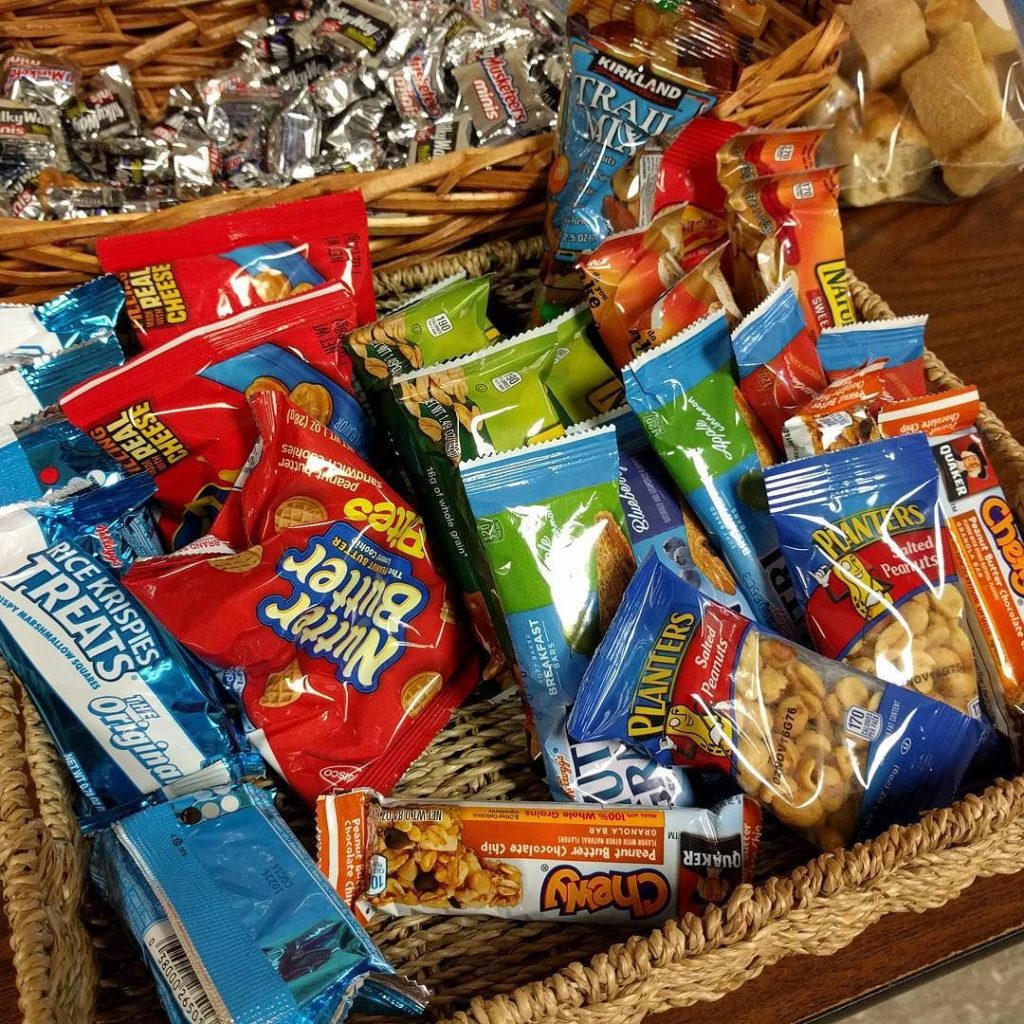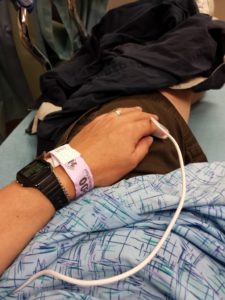If you have food allergies, dining out is always a risk. We had a close call our first night in Chicago on a family vacation last month.
After a long day of travel, we got settled into our hotel room and went down to one of the hotel restaurants for a late dinner. It was a Sunday evening, around 9:30, and while the front desk had assured us that the restaurant was open until 11, that turned out to only be half true. The restaurant entrance was blocked off, but the kitchen was serving the full menu to a shared seating area that you entered through the bar.
We’d been concerned about finding food for our not-quite-two-year-old son. Kids’ menus are awfully limited these days, and very heavy on cheese, which he can’t eat. Chicken nuggets are fine once in a while, but only go so far on a ten-day trip. So we were pleasantly surprised to see a Sunbutter, jelly and banana sandwich on the kids’ menu. Because of my severe peanut allergy, we keep peanuts out of the house, so Katie goes to sunflower seed butter and almond butter for toast and sandwiches, and J loves it so much he’ll demand a taste if she’s eating it. Score!
After a very long wait, the waitress finally brought the sandwich, dropped it off saying, “Here’s your PBJ,” and left.
Wait, PBJ?
Katie tasted it, and it was in fact peanut butter.
Red alert mode engaged!
As I mentioned, I’m severely allergic to peanuts. We don’t know yet whether J is, but we didn’t want to risk finding out in a hotel in a strange city thousands of miles from home.
The waitress seemed a bit confused by the issue when we finally got her attention (all the while trying to find other things we could feed an increasingly-cranky toddler who thought he was finally going to eat), and we had to point out that yes, the menu specifically said Sunbutter.
They did take the sandwich off the bill, and replaced it with a plain jelly-and-banana sandwich. But it put us on alert for the rest of the week.
The really disturbing thing was that it wasn’t just any sunflower seed butter listed on the menu, but a specific brand, one whose purpose is to be a safe alternative for people who are allergic to peanuts. That’s like telling a diabetic that you have Clemmy’s sugar-free ice cream and handing them Ben and Jerry’s. Or giving someone Everclear to help with their dehydration.
We lucked out, because Katie caught it before J could eat any of it. Really, the restaurant dodged a bullet too: They could have served it to a family with a confirmed allergic child. Imagine how blindsided they’d be when someone silently replaced a peanut-free food with peanuts. Continue reading →

